If you’re looking for a beautiful easy to grow succulent that’s perfect for a hanging planter or on a window sill hanging down, look no further than the String of Hearts (Ceropegia woodii) plant!
I picked up my first string of hearts plant a few years ago and has been so pleasantly surprised at how easy it’s been to care for. My plant has grown to impressive lengths with minimal care (and even in a pot with no drainage holes).
It’s one of the easiest succulents I’ve cared for and I’m excited to share it with you!
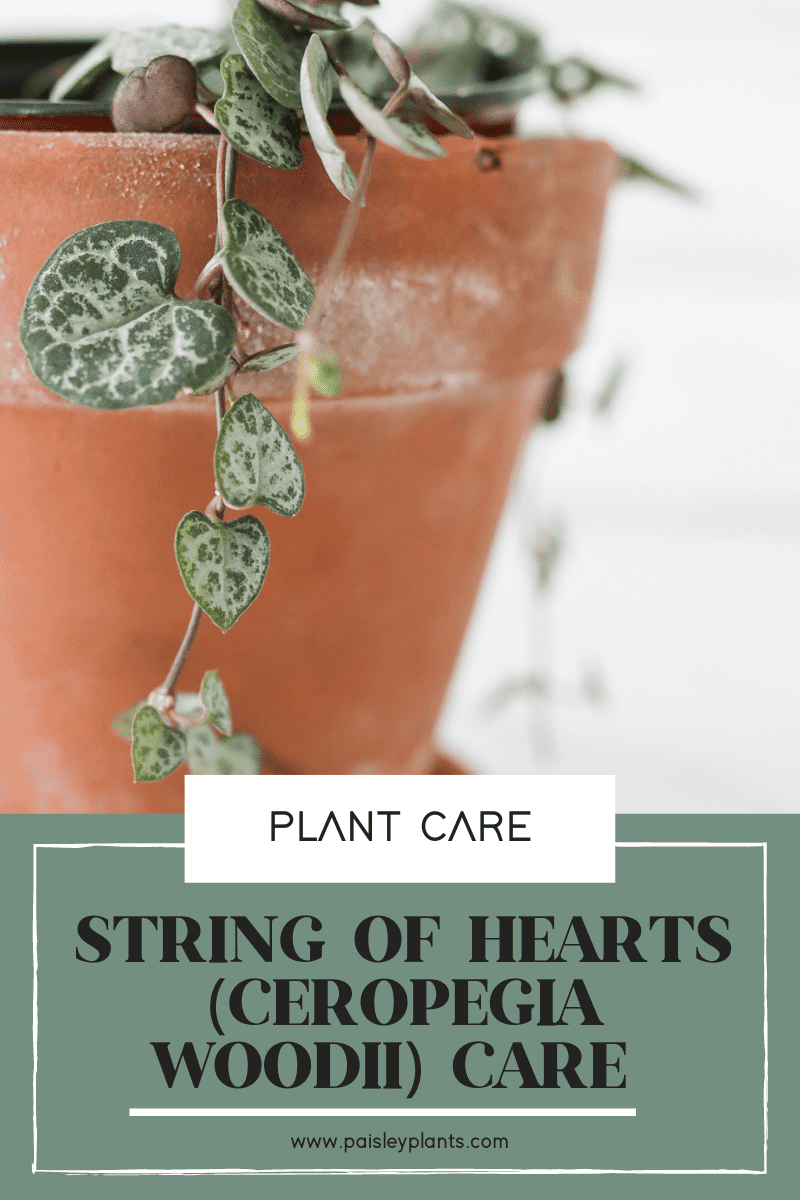
This post includes affiliate links.
Table of Contents
Background Information
The Ceropegia woodii, more commonly known as the common name string of hearts, also goes by one of these names: rosary vine, sweetheart vine or chain of hearts!
It is a perennial variety of hanging succulents. Native to South Africa, this plant lends its name from the little heart-shaped leaves that grow on a thin, stringy, trailing vines.
These plants can grow quickly up to 12 feet in length. They slow their growth in the winter time but will start growing again in the spring. I’ve noticed mine growing incredibly fast during the growing season with the right indirect bright light!
During the summer and fall, you might also notice your string of hearts blooming flowers.These unique flowers are pink or purple and oddly resemble an upside-down mushroom.
Toxicity
These plants are non-toxic making them a great option for people with pets or small children.
String of Hearts (Ceropegia woodii) Care Tips
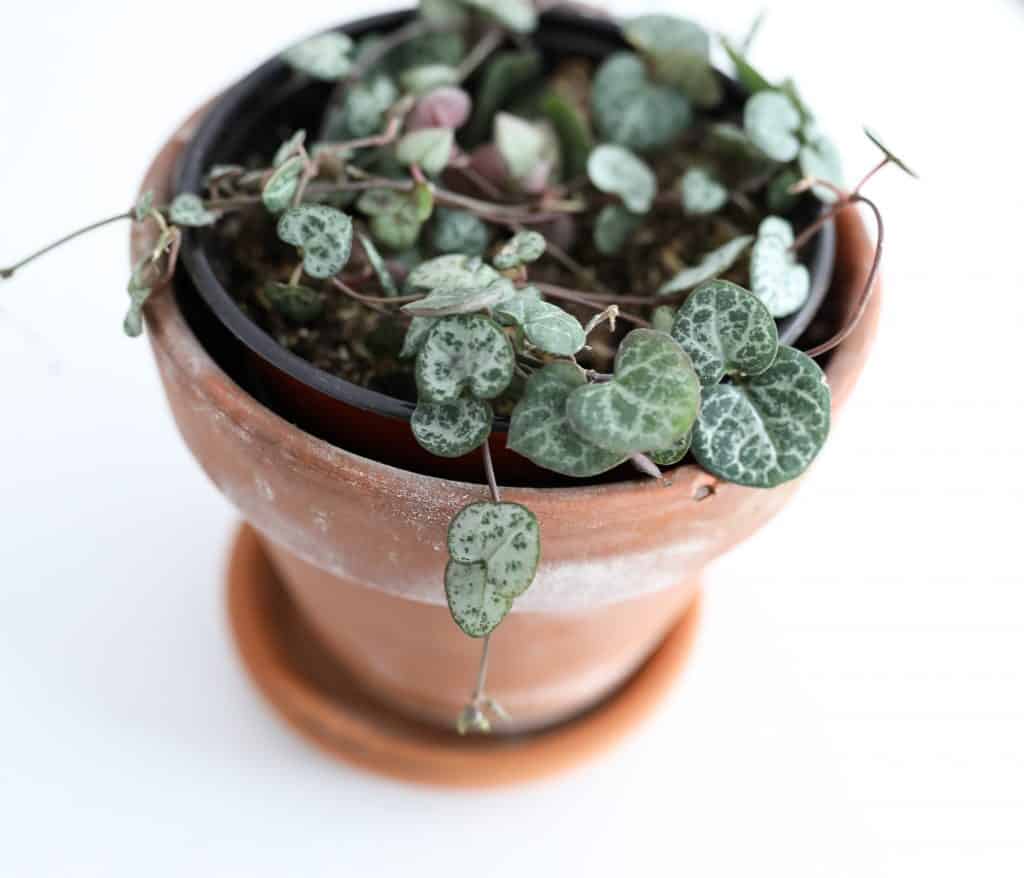
Light
To ensure the best rate of growth in both vines and flowers, the need enough light! Keep your string of hearts in a location where it gets bright, indirect light. It should be exposed to the sun for a partial amount of the day, aim for about 4 to 6 hours.
I have my plant hanging on a wall near south facing window and it is flourishing!
Water
While the string of hearts might be classified as a succulent, they differ slightly from most other members when it comes to watering. Make sure the soil has dried out completely before watering your plant.
When it is time to water, give them a deep water; make sure that excess water has been expelled from the pot’s drainage holes. Try finding a soil mix that is slightly acidic to neutral in pH.
My best trick for knowing when to water your plant is to put your finger into the soil. If your feel dry soil, it ‘s time to water it. If the soil is still moist, wait a few more days!
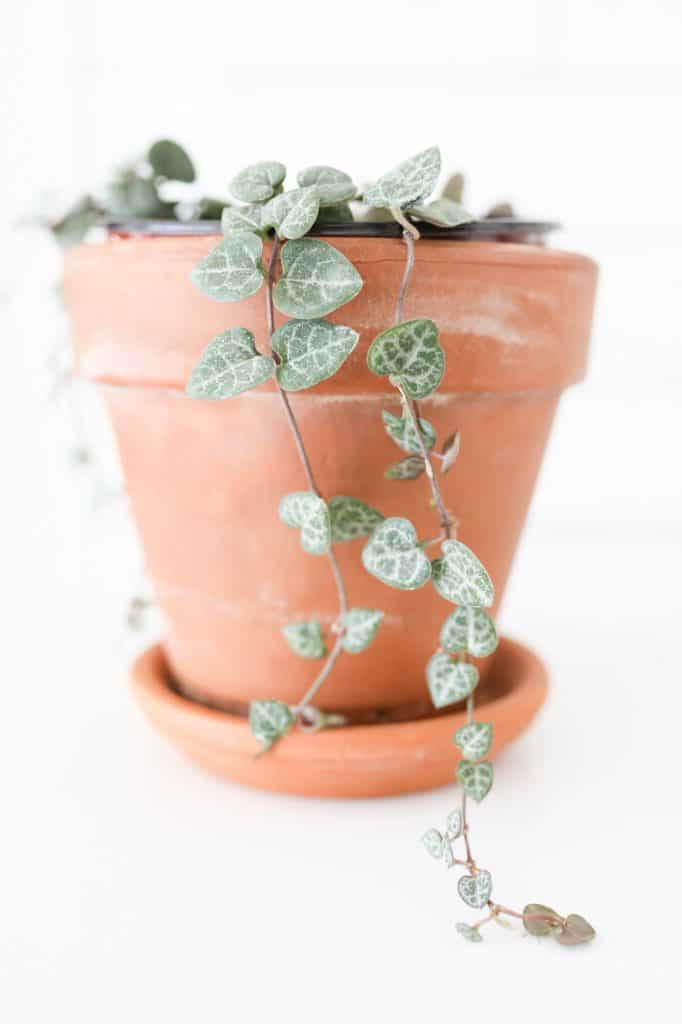
Soil
Similar to most succulents, the string of hearts do not like to sit in a wet soil; a well-draining soil is key. Many garden retailers sell soil mixes that are specially tailored to suit the needs of cacti and succulents; this will work great for the string of hearts. Cactus mix or succulent mix soil helps keeps the soil lightly moist, yet not soaked.
Fertilizer
Try not to heavily fertilize your string of hearts plant. Fertilizer that is too heavy in nutrients can cause your plant to look “scraggly” and unkempt. Rather, select a fertilizer that is low in nitrogen and marketed towards succulents.
Proper fertilizer can aid in new growth for your indoor plants but be sure to stop in the winter months while they are dormant.
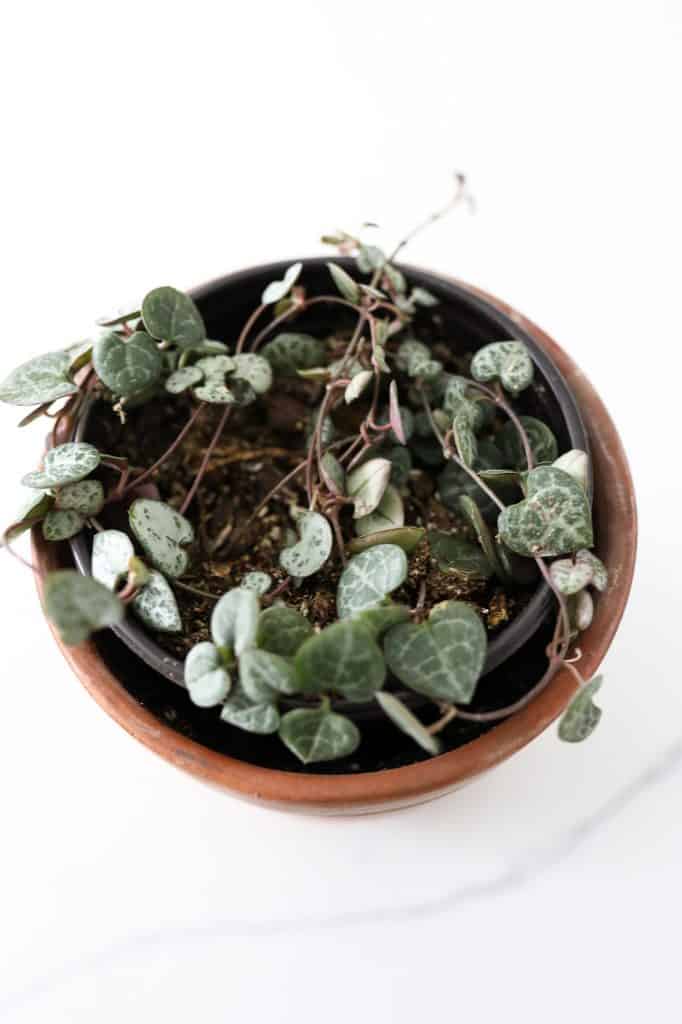
Temperature & Humidity
As a general rule of thumb, these plants like warm temperatures. For brief periods of time, the string of hearts can survive cold temperatures as low as 20° F, but that really is not ideal, as it causes severe stress on your plant. An optimal temperature range for the string of hearts is around 65° to 80° F. The regular temperature of your home will like provide the right conditions for your plant.
Pruning
For a bushier plant you’ll want to regularly prune your plant during the spring and summer months. Where you prune your plant it will break off into two vines. Make sure that you clip the vine high enough so you will get a bushier plant if that’s what you’re going for.
All of your stem cuttings can be propagated to create a new plant or two! Head over to my how to propagate string of hearts post for 4 different ways to propagate your vines. (I prefer water propagation!)
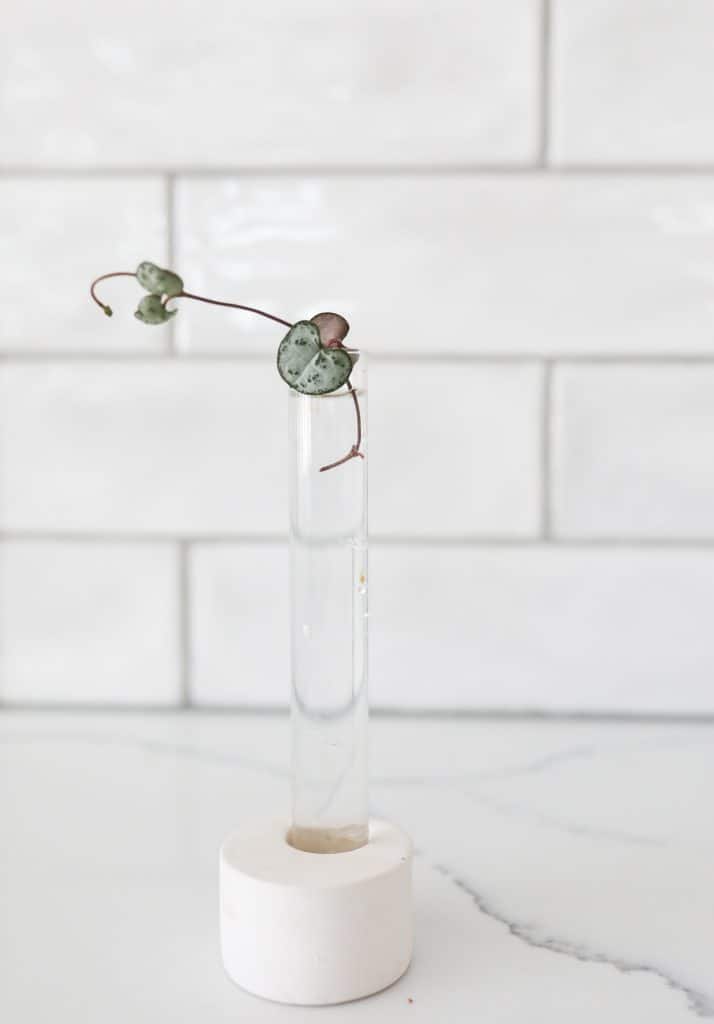
Plant Pot
Choose a plant pot that provides drainage for your string of hearts. Doing so will help prevent root rot.
The string of hearts is a semi-succulent plant and therefore does not enjoy sitting in overly damp soil. A pot with good drainage eliminates excess water that the string of hearts simply does not need.
A terra cotta or unglazed pot are porous and can help soak up excess moisture that the drainage hole does not filter out.
When starting your string of hearts, you can select a small pot (somewhere between 8 and 12 inches). Repot your string of hearts every couple of years to refresh the soil.
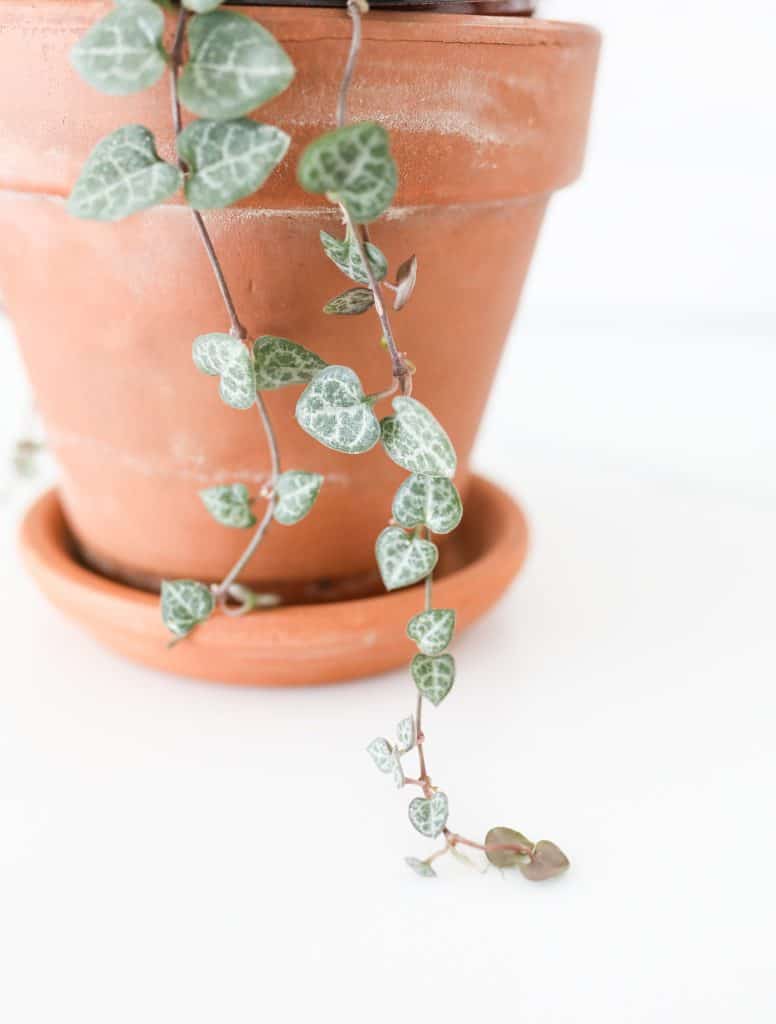
Pests & Diseases
Some of the common pests you can find are Spider Mites, Aphids and Scale Insects. Be sure to move these plants to a spot where no other plants are and treat them with insecticidal soap or neem oil.
Only put them back near other plants when you are certain they are free of any pests.
When it comes to diseases, the most common fungal infection is root rot as we talked about earlier and mold. Soggy soil or overwatering can be a main cause of these problems.
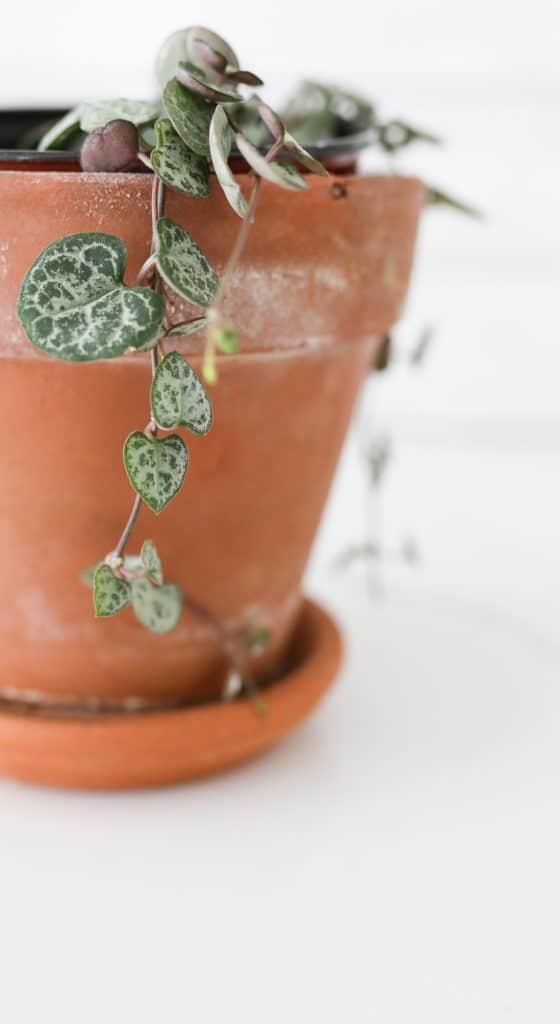
How to Get String of Hearts to Bloom
The string of hearts plant grow very small, pale magenta flowers.
The best way to get this plant to bloom is by putting it outdoors. You will rarely see a string of hearts bloom indoors unfortunately. I can attest to this because I have never put mine outdoors and despite being a very healthy plant I’ve never seen a flower on it!
They mostly grow in the late summer or early fall. Be sure to give it all the proper care – enough bright indirect light, the right amount of fertilizer and correct watering – and put it outside and you’ll have be setting yourself up for success!
Common Problems
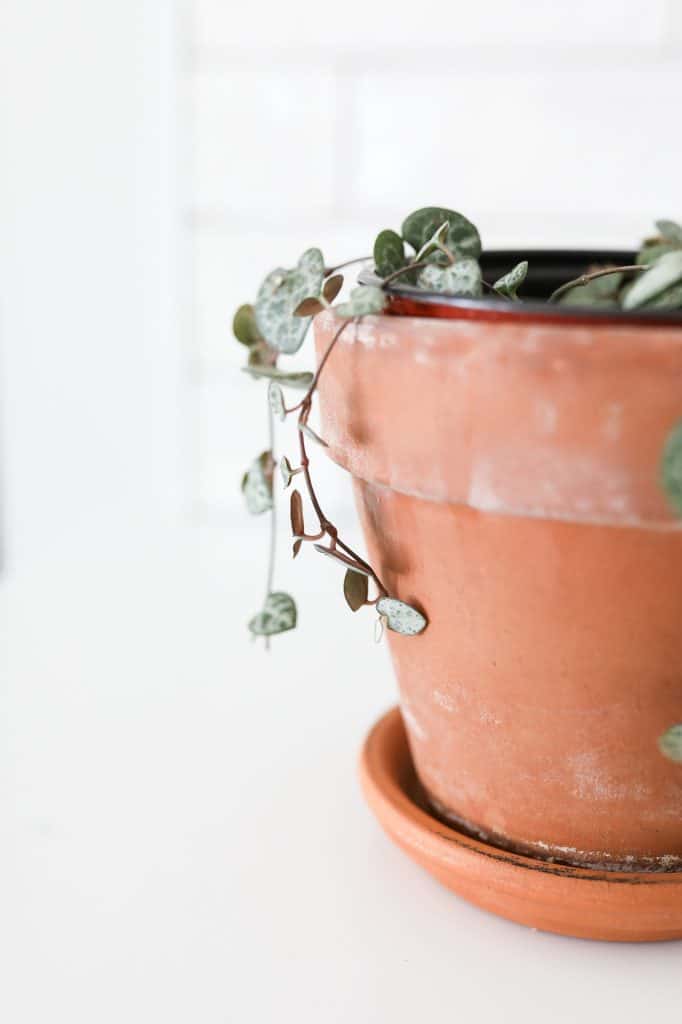
Yellowing Leaves
Yellow leaves are typically caused by overwatering. Be sure to allow the soil to fully dry out before watering it again.
Leaf Drop
A sudden leaf drop can happen when your plant is either under watered or near a cold draft. First check to make sure it wasn’t hit with an air conditioning vent or near a drafty window.
If that’s fine, gradually increase the amount of water you’re giving your plant to see if that helps.
Dull Leaves
If your plant’s leaves are looking dull and lifeless, it’s likely getting too much direct sun. Try moving it out of reach of direct rays to see if that helps bring the color back.
Where to Buy
FAQ
Your string of hearts plant need plenty of bright indirect light. It’s best to not give them too much direct sunlight as that can scorch your plant but giving it enough indirect sun can encourage good growth.
Yes, the best soil to give them succulent soil so they have proper drainage.
Now that you know how to care for your string of hearts, let’s talk about propagating it! I’ve propagated my string of hearts a couple times and it is so easy!

